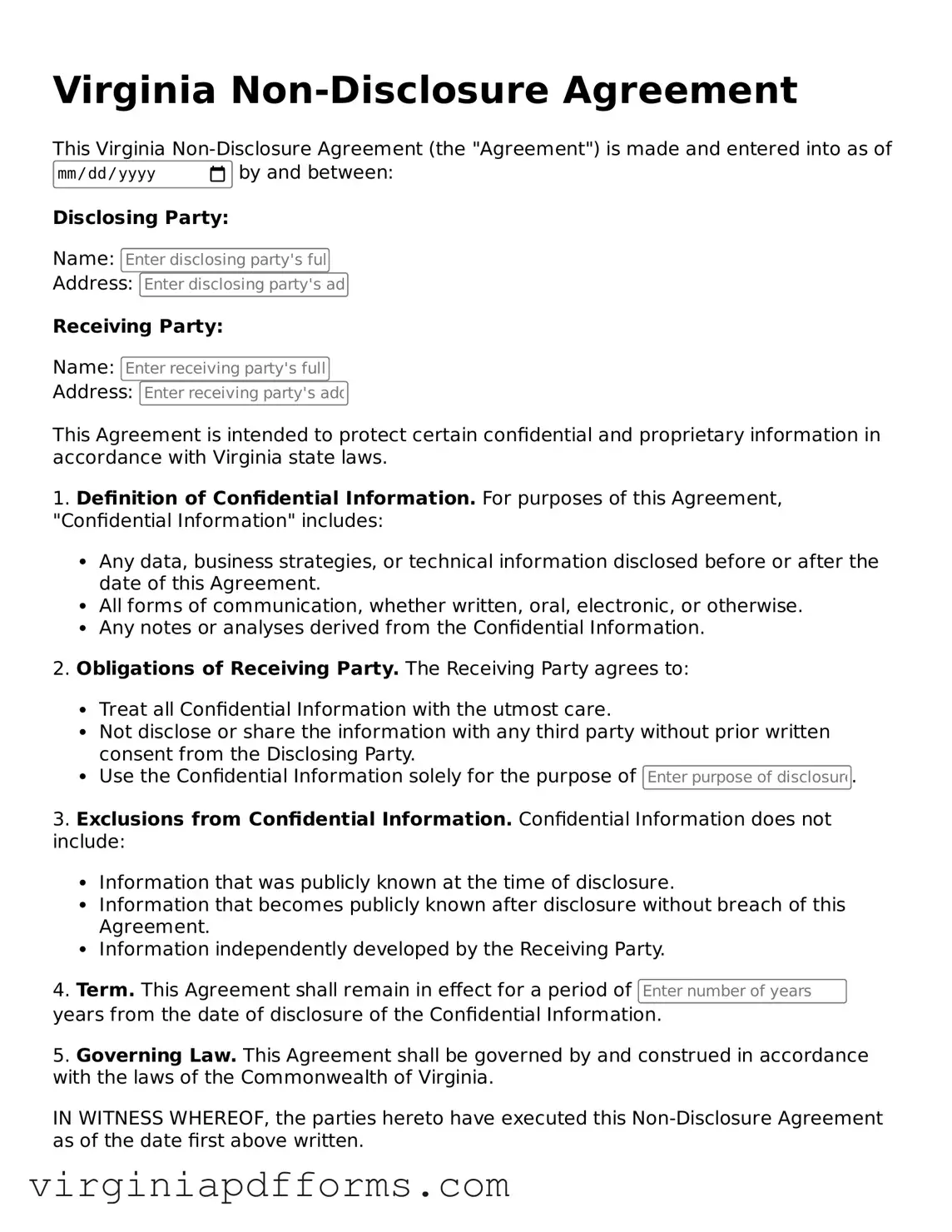Attorney-Approved Virginia Non-disclosure Agreement Document
A Virginia Non-disclosure Agreement (NDA) is a legal document designed to protect sensitive information shared between parties. This agreement ensures that confidential data remains secure and is not disclosed to unauthorized individuals. Understanding its importance can help businesses and individuals safeguard their valuable information.
Access My Document Now
